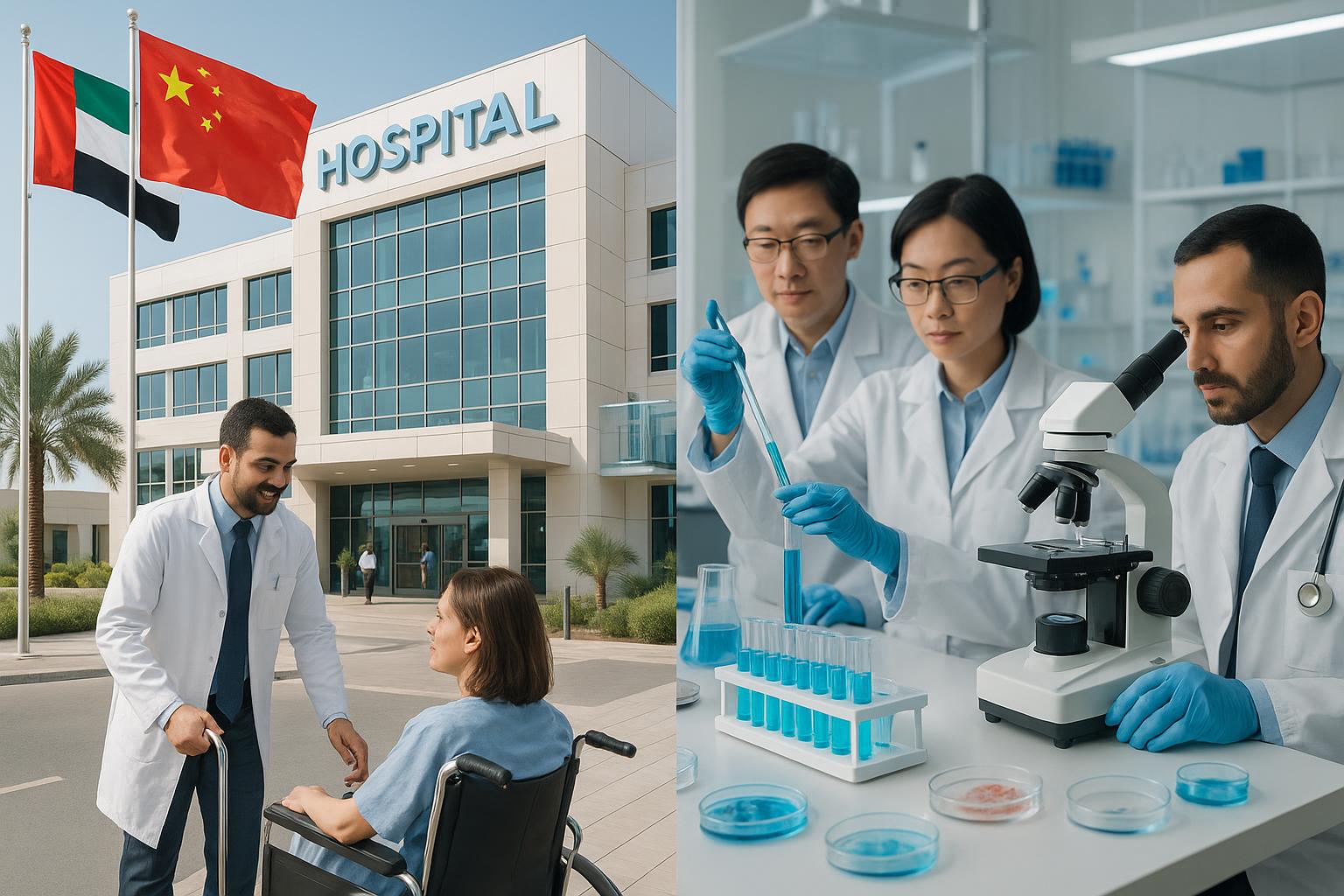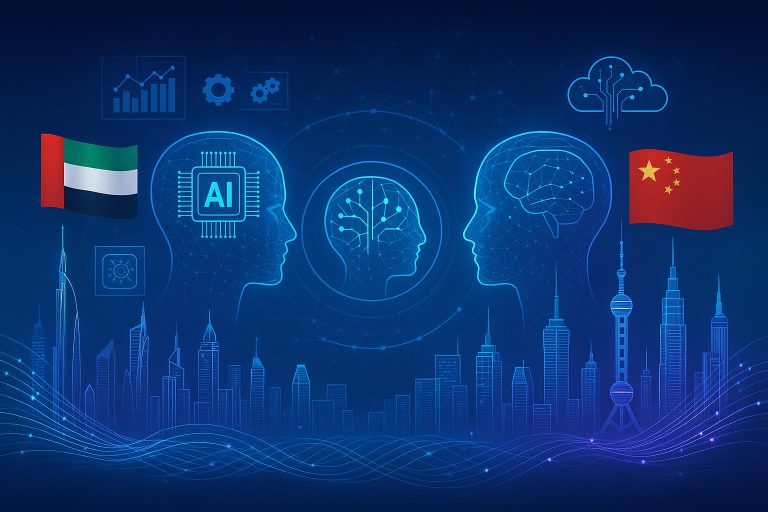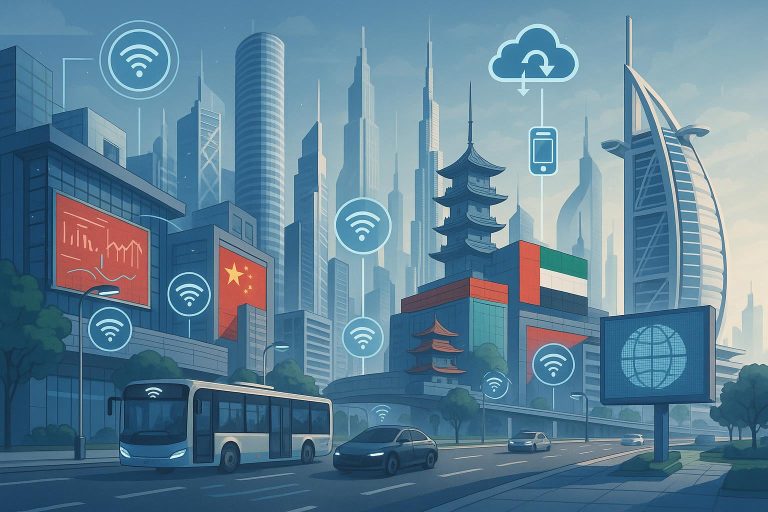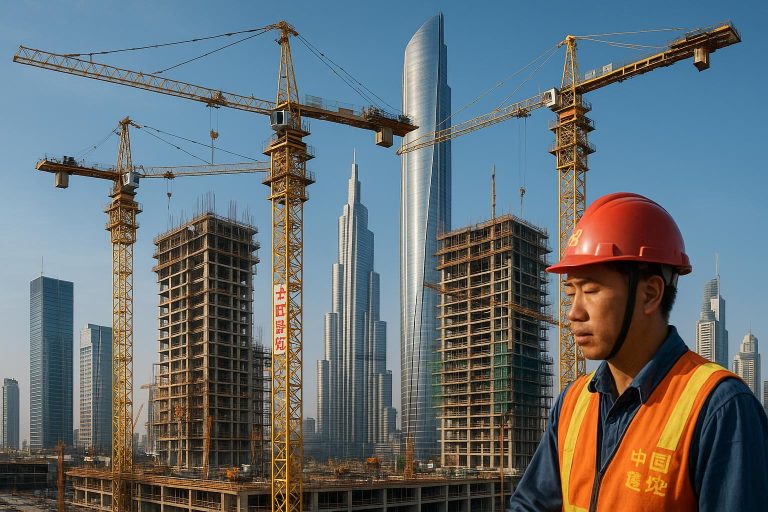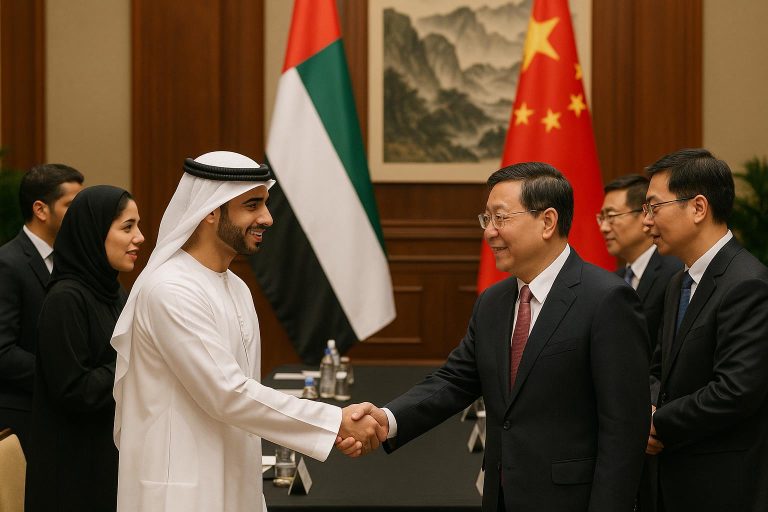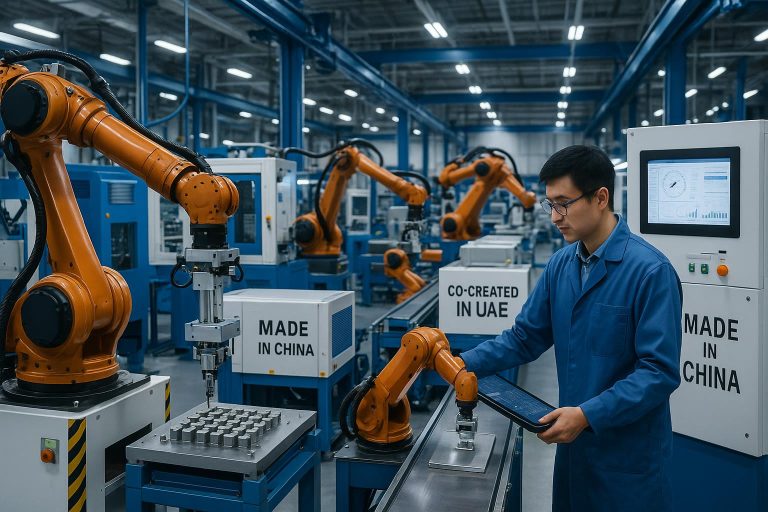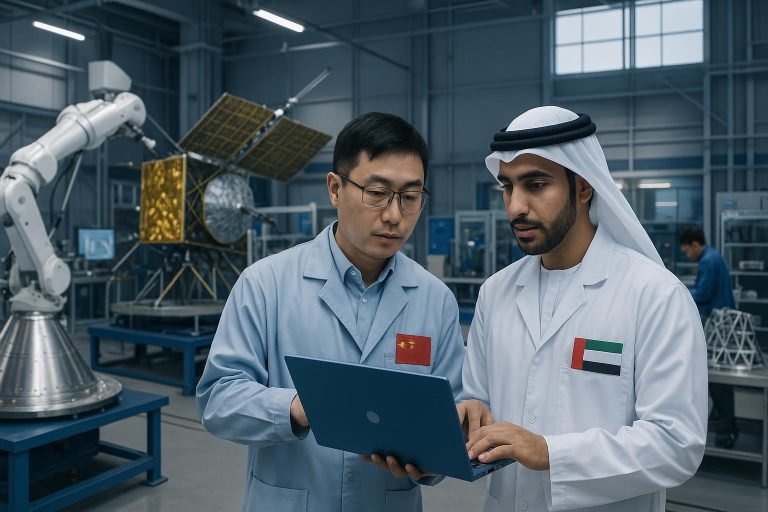The New Frontier of Wellness: Chinese Investment and Innovation in the UAE’s Healthcare and Pharmaceutical Ecosystem.
Executive Summary
The United Arab Emirates (UAE) and China are forging a robust partnership that extends beyond traditional trade into the vital sectors of healthcare and pharmaceuticals. This article explores the burgeoning landscape of Chinese investment and innovation within the UAE’s wellness ecosystem, highlighting the strategic alignment between both nations’ developmental goals. With bilateral trade reaching a record $101.8 billion in 2024, the foundation for deeper collaboration is firmly established. Chinese enterprises are increasingly contributing to the UAE’s vision for a diversified, knowledge-based economy, particularly in healthcare infrastructure, medical technology, and pharmaceutical manufacturing. This analysis delves into the opportunities arising from this synergy, including advancements in biotech and medical devices, while also addressing critical considerations for sustainable growth. The proactive engagement of Chinese capital and expertise is not only enhancing the UAE’s healthcare capabilities but also positioning the nation as a regional hub for medical innovation, fostering a new frontier of wellness driven by strategic bilateral cooperation.
Introduction
The relationship between the United Arab Emirates and the People’s Republic of China has evolved into a comprehensive strategic partnership, characterized by remarkable economic growth and deepening collaboration across diverse sectors. This enduring alliance, formally established in 2018, has seen bilateral trade skyrocket to an unprecedented $101.8 billion in 2024, marking an astounding 800-fold increase since 1984. The UAE stands as China’s largest export market in the Middle East and its second-largest trading partner in the region, while China consistently remains the UAE’s foremost trading partner. This robust economic foundation, further solidified by the presence of over 15,000 Chinese firms operating within the UAE and a significant increase in UAE investments in China, provides a fertile ground for strategic expansion into new domains.
Among these emerging frontiers, the healthcare and pharmaceutical sectors have garnered significant attention, representing a critical area for mutual growth and innovation. Both nations recognize the imperative of advancing public health, fostering medical research, and ensuring pharmaceutical security. This article will meticulously examine the dynamics of Chinese investment and innovation within the UAE’s healthcare and pharmaceutical ecosystem. It will explore the current landscape of bilateral cooperation, identify key opportunities and strategic growth drivers, address inherent challenges, and present a compelling case study. Ultimately, it aims to offer a forward-looking perspective and strategic recommendations for maximizing the potential of this vital partnership in shaping the future of wellness in the region.
The Current Landscape of Bilateral Cooperation
The strategic partnership between the UAE and China has matured significantly, evolving from a transactional relationship into a comprehensive alliance underpinned by shared economic interests and a vision for global connectivity. This transformation is evident in the remarkable growth of bilateral trade, which surged to an unprecedented $101.8 billion in 2024, representing an 800-fold increase since 1984. This makes the UAE China’s largest export market in the Middle East and its second-largest trading partner in the region, while China consistently holds its position as the UAE’s primary trading partner. The economic ties are further strengthened by the presence of over 15,000 Chinese firms operating within the UAE, contributing significantly to the local economy and fostering a vibrant business environment. Concurrently, UAE investments in China have also seen substantial growth, reaching $4.5 billion by the end of 2023, a 96% increase from the previous year, underscoring the reciprocal nature of this economic engagement.
The formal establishment of a Comprehensive Strategic Partnership in 2018 provided a robust framework for this deepening cooperation. This was further institutionalized through mechanisms such as the UAE-China Investment and Economic Cooperation Working Group, which facilitates high-level dialogues and strategic agreements. Regular diplomatic engagements and high-profile visits between leaders of both nations continually reinforce this partnership, ensuring alignment on key regional and international issues. This broad strategic alignment has paved the way for extensive collaboration across a multitude of sectors, including energy and clean energy, infrastructure and logistics, technology and AI, trade and free zones, and finance and investment. For instance, significant projects like the COSCO terminal at Khalifa Port and the China-UAE Industrial Capacity Zone exemplify the infrastructure and logistics cooperation, positioning the UAE as a crucial gateway for China’s Belt and Road Initiative (BRI) in the Gulf.
While these traditional sectors continue to thrive, recent developments in 2024-2025 indicate a strategic pivot towards new economy sectors, entrepreneurship, tourism, and aviation. This diversification is crucial for both nations as they seek to build resilient and future-proof economies. Within this evolving landscape, the healthcare and pharmaceutical sectors have emerged as areas of particular strategic importance. The UAE’s ambitious vision to become a global healthcare hub, coupled with China’s advanced capabilities in medical technology and pharmaceutical manufacturing, creates a compelling synergy. The acquisition of UCB Pharma’s mature business in China by the UAE’s Mubadala is a testament to the growing cross-border investment in this domain. This cooperation extends beyond mere investment, encompassing partnerships in medical technology, pharmaceutical development, and biotech, laying the groundwork for a comprehensive healthcare ecosystem. The geographic focus areas of Abu Dhabi as a primary investment hub and Dubai’s role in trade facilitation further amplify these opportunities, with free zone partnerships across the emirates providing conducive environments for healthcare innovation and investment.
Opportunities and Strategic Growth Drivers
The convergence of China’s robust innovation ecosystem and the UAE’s strategic vision for healthcare diversification presents a wealth of opportunities and powerful growth drivers. The UAE’s proactive stance in attracting foreign direct investment, coupled with its advanced infrastructure and business-friendly environment, makes it an ideal destination for Chinese healthcare and pharmaceutical enterprises seeking international expansion. Conversely, China’s rapidly advancing capabilities in medical technology, biotechnology, and pharmaceutical manufacturing offer invaluable resources for the UAE’s ambition to become a regional and global hub for wellness.
One significant driver is the UAE’s commitment to enhancing its healthcare infrastructure and services. This includes substantial investments in state-of-the-art hospitals, specialized medical centers, and research facilities. Chinese companies, with their expertise in large-scale infrastructure development and medical equipment manufacturing, are well-positioned to contribute to these projects. The focus on medical technology and pharmaceutical partnerships is already evident, with entities like Mubadala’s acquisition of UCB Pharma’s mature business in China signaling a clear intent for cross-border collaboration in drug development and market access. This strategic move not only provides Mubadala with a foothold in the vast Chinese pharmaceutical market but also facilitates the transfer of knowledge and technology back to the UAE.
Furthermore, the broader strategic cooperation between the two nations, particularly in Technology & AI, serves as a potent catalyst for the healthcare sector. The UAE’s drive for digital transformation and its investments in AI, exemplified by initiatives like Digital Dubai exploring AI and smart city technologies in Shenzhen, can be directly applied to healthcare. This includes AI-driven diagnostics, personalized medicine, telemedicine, and smart hospital management systems. Chinese tech giants and startups are at the forefront of these innovations, offering cutting-edge solutions that can significantly enhance the efficiency and quality of healthcare delivery in the UAE. The $5 billion partnership between the UAE and China for AI, renewable energy, and infrastructure underscores the potential for synergistic development in these high-tech areas.
The Belt and Road Initiative (BRI) also plays a pivotal role, with $3.1 billion in BRI projects already in the UAE, facilitating cross-border investment and logistical efficiencies. This infrastructure connectivity supports the seamless flow of pharmaceutical products, medical devices, and raw materials, strengthening supply chains and market access for both sides. Free zones like JAFZA, with its partnerships with Chinese free trade zones, provide an attractive environment for Chinese pharmaceutical companies to establish manufacturing bases, research and development centers, and distribution hubs, leveraging the UAE’s strategic geographic location to serve the wider MENA region and beyond.
Finally, the robust Finance & Investment cooperation, including cross-border payment initiatives like China’s CIPS and the UAE central bank’s collaboration, and fintech partnerships in Abu Dhabi, ensures the financial mechanisms are in place to support large-scale healthcare investments. The launch of ETFs facilitating UAE-China financial industry cooperation further mobilizes capital for joint ventures and strategic acquisitions. These financial enablers are critical for sustaining the growth of Chinese investment in UAE healthcare, fostering a dynamic environment for innovation, and ultimately, advancing the wellness agenda for both nations.
Challenges and Critical Considerations
While the trajectory of Chinese investment and innovation in the UAE’s healthcare and pharmaceutical ecosystem is largely positive, it is imperative to acknowledge and address potential challenges and critical considerations to ensure sustainable and mutually beneficial growth. One primary area of focus is regulatory harmonization and compliance. Both the UAE and China possess distinct regulatory frameworks for pharmaceutical approval, medical device certification, and healthcare service provision. Navigating these differences requires significant effort to streamline processes, ensure product efficacy and safety standards are met, and avoid bureaucratic hurdles that could impede investment and market entry. Establishing clear, transparent, and efficient pathways for regulatory approval will be crucial for accelerating collaboration.
Another consideration revolves around cultural integration and talent management. As Chinese firms expand their presence in the UAE, and vice versa, understanding and adapting to diverse business cultures, communication styles, and workforce expectations becomes vital. Successful partnerships will depend on effective cross-cultural management strategies, including language proficiency, local talent development, and fostering inclusive work environments. Bridging potential gaps in professional qualifications and licensing for medical personnel and researchers from both countries will also be essential to facilitate seamless operational integration.
Furthermore, intellectual property (IP) protection and technology transfer remain critical aspects in high-innovation sectors like healthcare and pharmaceuticals. Ensuring robust IP protection mechanisms are in place and consistently enforced is paramount to encouraging advanced technological investments and fostering a climate of trust for research and development collaborations. Both nations must work towards creating an environment where innovation is safeguarded, and technology transfer occurs equitably, benefiting both parties and promoting long-term scientific advancement. Addressing these considerations proactively will strengthen the foundation of this strategic partnership, transforming potential obstacles into opportunities for deeper integration and shared progress.
Case Study Spotlight
While direct, publicly detailed examples of Chinese investment into the UAE’s healthcare and pharmaceutical ecosystem are still emerging, the broader strategic partnership provides a strong foundation for future case studies. A compelling illustration of the reciprocal nature of this collaboration, and a precursor to future Chinese inbound investment, can be seen in Mubadala’s acquisition of UCB Pharma’s mature business in China. Although this represents an outbound investment from the UAE into China, it highlights the deep engagement and strategic intent of UAE entities in the pharmaceutical sector, which is mirrored by China’s growing interest in global healthcare markets. This acquisition by a major UAE sovereign investor demonstrates a sophisticated understanding of the pharmaceutical landscape and a willingness to engage at a high level in complex markets. It also sets a precedent for future cross-border mergers and acquisitions, potentially inspiring Chinese pharmaceutical and biotech firms to seek similar strategic opportunities within the UAE, leveraging its advanced infrastructure and market access to the MENA region. This strategic move by Mubadala underscores the mutual recognition of the value and potential within each other’s healthcare and pharmaceutical industries, paving the way for more direct Chinese investment and innovation in the UAE.
Future Outlook and Strategic Recommendations
The future of Chinese investment and innovation in the UAE’s healthcare and pharmaceutical ecosystem is poised for significant expansion, driven by converging strategic interests and a shared commitment to advancing public health. The UAE’s ambitious vision to become a global healthcare hub, coupled with China’s burgeoning capabilities in medical technology, biotech, and pharmaceutical manufacturing, creates a powerful synergy. This partnership is not merely about capital flow but about fostering a collaborative environment for research, development, and the deployment of cutting-edge healthcare solutions.
Looking ahead, several key trends and opportunities will shape this new frontier of wellness. The increasing focus on digital health and telemedicine presents a fertile ground for collaboration, leveraging China’s advanced AI and digital transformation expertise with the UAE’s smart city initiatives. Investments in biotechnology and genomics are also expected to accelerate, as both nations prioritize precision medicine and personalized healthcare. Furthermore, the establishment of specialized medical free zones within the UAE, offering streamlined regulatory processes and incentives, could further attract Chinese pharmaceutical and medical device manufacturers seeking to establish a regional presence.
To maximize the potential of this partnership, several strategic recommendations can be put forth:
- Establish Joint Innovation Hubs: Create dedicated UAE-China healthcare innovation hubs, potentially within existing free zones, to foster collaborative research and development in areas like AI-driven diagnostics, drug discovery, and advanced medical devices. These hubs could offer shared laboratory facilities, incubators for startups, and access to both markets.
- Harmonize Regulatory Frameworks: Intensify efforts to align regulatory standards and approval processes for pharmaceuticals and medical devices. This could involve mutual recognition agreements or joint working groups to streamline market entry and reduce compliance burdens for companies operating in both jurisdictions.
- Facilitate Talent Exchange and Training: Develop programs for the exchange of medical professionals, researchers, and healthcare administrators. This would facilitate knowledge transfer, best practice sharing, and cultural understanding, building a robust human capital foundation for the partnership.
- Promote Cross-Border Investment Funds: Encourage the creation of specialized bilateral investment funds focused exclusively on healthcare and pharmaceutical ventures. These funds could de-risk investments and provide necessary capital for innovative projects, particularly in biotech and medical technology startups.
- Leverage Belt and Road Initiative for Healthcare Supply Chains: Optimize logistics and supply chain infrastructure under the BRI to ensure efficient and cost-effective distribution of pharmaceutical products and medical supplies between China and the UAE, and onward to the broader MENA region.
By proactively implementing these recommendations, the UAE and China can solidify their position at the forefront of global healthcare innovation, creating a resilient, advanced, and accessible wellness ecosystem that benefits both their populations and the wider region.
Conclusion
The strategic partnership between the UAE and China is rapidly redefining the landscape of global wellness, with healthcare and pharmaceuticals emerging as pivotal sectors for bilateral cooperation. The remarkable growth in trade and investment, coupled with a shared vision for innovation and economic diversification, has laid a robust foundation for this new frontier. Chinese investment and technological prowess are significantly contributing to the UAE’s ambition to establish itself as a leading healthcare hub, while the UAE offers Chinese enterprises a strategic gateway to the MENA region and beyond. Despite challenges related to regulatory harmonization, cultural integration, and intellectual property protection, the proactive engagement from both sides promises to overcome these hurdles. By fostering joint innovation, streamlining regulations, facilitating talent exchange, and leveraging strategic investment, the UAE and China are not only enhancing their respective healthcare ecosystems but also setting a precedent for a collaborative, innovation-driven approach to global health and wellness.
References
[1] UAE-China Bilateral Investment Research Findings (Provided Research Data)

